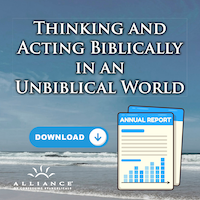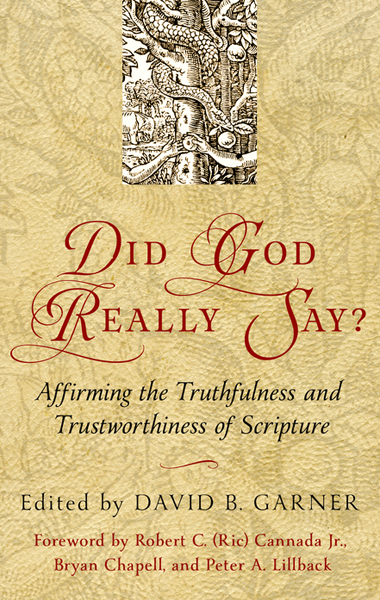
For almost as long as I can remember as a Christian I have found myself musing on the question of what makes a good Bible translation. I grew up in a part of the world in which, for many professing Christians, this was simply a non-question There was only one ‘good’ version and it was ‘Authorised’! But I also happened to be the son of a minister who had come to the conviction that the New American Standard Bible was actually to be preferred over the KJV and that was the version he used both in private and in public.
Then I went to Westminster Seminary and was there in the three years leading up to the publication of the New International Version 1984 edition. The fact that at least four faculty members in Westminster at that time were either on the original NIV translation committee or were involved in the NIV Study Bible team at that time meant that we as students were given the inside track on a lot of what went on behind the scenes in the whole translation process for that version. So my musings on what constitutes a good Bible translation went a step further again.
It was in the course of these musings that it became clear that all kinds of factors get poured into the mix of what it takes to produce a reliable translation. Some of them are linguistic, others are theological and others still are a matter of personal taste and preference and it is interesting to see the interplay between them.
They translate (no pun intended) into the debate over versions in different ways in terms of which of them should take priority. And, interestingly, it is not always the issue of how to translate from one language into another that is to the fore. In fact this is more than just interesting; it is surprising, because one would expect any discussion about translation to be guided in the main by the principles that govern the task of translating into another language.
In the debate surrounding the task of translating the Bible from Hebrew, Aramaic and Greek it is curious that the basic principles of how to translate between any two languages are all too often subordinated to other considerations. This manifests itself especially in the desire for a ‘literal’, or, ‘formal equivalence’ approach to the task. The rationale that drives this approach is more than commendable, because it seeks to uphold the doctrine of what technical theologians call ‘plenary verbal inspiration’. That is, the correct conviction that every word of Scripture is ‘God-breathed’ (2Ti 3,16) [NIV] and therefore every word matters in translation. But it is a principle that is prone to blown out of due proportion in relation to other vital principles related to the task.
The truth of that doctrine is self-evident because it is overtly stated, not just by Paul to Timothy, but also by Peter (2Pe 1.20-21) and affirmed indirectly elsewhere in Scripture. The question, however, is how this manifests itself as the translator moves from the ‘donor’ to the ‘receptor’ language. It is a major issue because no two languages or language groups are identical. And that is so, not merely because they have different vocabularies, but because their grammar, syntax and idiom differ as well.
So, when I was studying French at undergraduate level in university, one of the basic principles we were taught was the need to accurately convey the words and the sense in which they were used from one language to another with as much sensitivity to the target language as to the one from which the translation was being made. The linguistic term for this aspect of translation is ‘dynamic equivalence’.
In the translation debate as it relates to Bible versions, this issue has been very much to the fore in the disagreement between those who favour the more ‘literal’ versions, such as the NASB and the ESV, and those which have opted for greater use of the dynamic equivalence principle such as the NIV. I say ‘greater use’ because even the most literal of the ‘literal’ translations are obliged to employ a degree of dynamic equivalence to make their translations intelligible.
There is, however, another theological principle that comes into play in this whole discussion, but has too often been downplayed. It is captured and vividly expressed in the opening chapter of the Westminster Confession of Faith:
The Old Testament in Hebrew (which was the native language of the people of God of old), and the New Testament in Greek (which, at the time of the writing of it, was most generally known to the nations), being immediately inspired by God, and, by His singular care and providence, kept pure in all ages, are therefore authentical; so as, in all controversies of religion, the Church is finally to appeal unto them. But, because these original tongues are not known to all the people of God, who have right unto, and interest in the Scriptures, and are commanded, in the fear of God, to read and search them therefore they are to be translated in to the vulgar language of every nation unto which they come, that, the Word of God dwelling plentifully in all, they may worship Him in an acceptable manner; and, through patience and comfort of the Scriptures, may have hope. (1.8) [Italics and Bold added]
It is the fact that the Scriptures are to be translated into ‘the vulgar language of every nation’ that stands out in this statement: Bible versions should be in the ordinary language of ordinary people.
The underlying biblical warrant for this is seen in from the fact that the Scriptures themselves in their original languages are very much in the ‘vulgar’ language of their day. The Hebrew of the bulk of the Old Testament range in style according the human authors the Holy Spirit used in writing them. And the switch to Aramaic, where that is used, reflects something of the shift in the lingua franca of the Jewish world towards the later period of OT history. But perhaps most striking is the way the New Testament authors reach, not for the high Attic Greek of the cultured classes and the academy, but for the koine – marketplace Greek.
The practical rub of these musings in recent times has surfaced in the play-off between the NIV and the ESV and some of the fairly high profile contributions to the debate. There is no question over the high concerns that motivated the production of the English Standard Version. Among other things, it quite rightly sets out to include many of the small, but significant connector words so vital especially to understanding Paul’s argument in the letters. Nor is there much dispute over the lack of wisdom and even integrity on the part of Biblica to kill off all previous editions of the NIV in favour of the 2011 edition. But what still hangs in the air in the relative merits and demerits of these respective (and respectable) translations is their relative readability.
Whatever commendable qualities the ESV may possess (and I speak as a user, not a spectator) it does not represent ‘the vulgar language’ of 99.95% of the English speaking world. Its syntax in places is tortuous and it lacks the public readability that marked its grand predecessor, the King James Version, and more recently, the New International Version.
The answer to this issue is not to commission yet another English version (though with the rapid evolution of English as she is spoken in many parts of the world that day will come soon enough). But maybe there could be a more sisterly relationship between the NIV (1984 Edition) and the ESV – reading from the former and then preaching from the latter?
The late Professor Raymond B. Dillard, who was himself involved with the NIV Study Bible, used to answer the question he was often asked, ‘Which is the best of the Bible versions?’ by asking another question: ‘In what context do you intend to use it?’ He was simply making the point that different translations of the Bible have strengths and weaknesses that make them more suitable for some situations and less so for others. Few of the English translations produced over the past 120 years have quite matched the achievement of the King James Version with its ability to be easily read (and heard) in public, as well as provide a good textual base for preaching, teaching and Bible study. But maybe that says more about the degeneration of the English language than it does about Bible translations! No doubt my musings over translations are set to continue…

The Alliance of Confessing Evangelicals is member supported and operates only by your faithful support. Thank you.















 © Alliance of Confessing Evangelicals
© Alliance of Confessing Evangelicals


